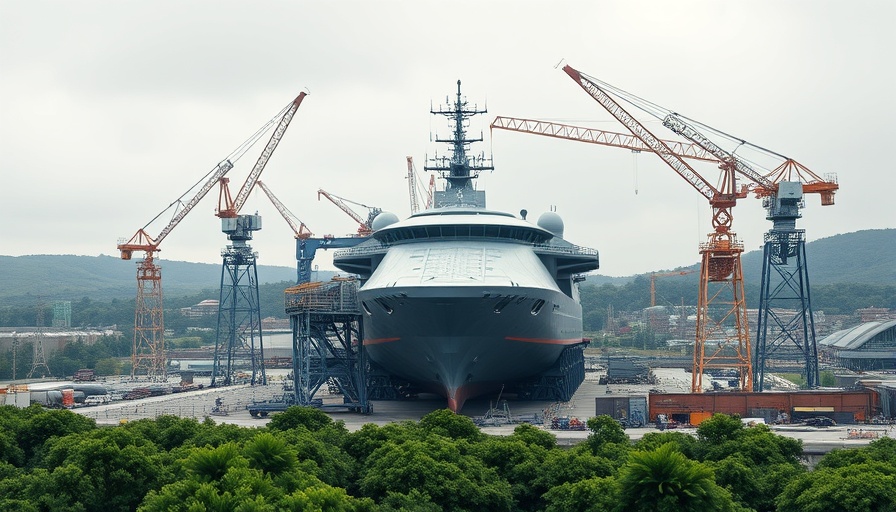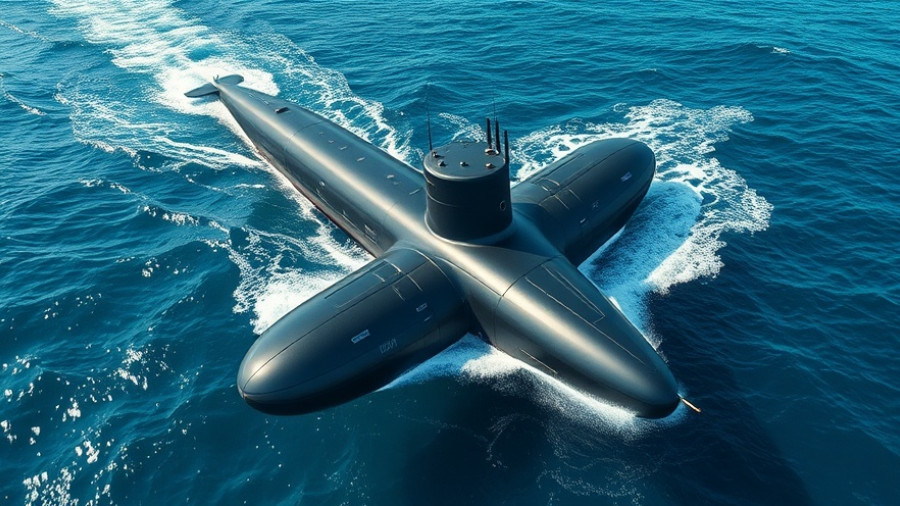
Charting New Waters: The Dawn of Autonomous Shipping
In a captivating leap towards the future of maritime technology, Saronic has marked a significant milestone by laying the keel for its first 150-foot autonomous ship. This event signifies not only a pivotal moment for the company but also heralds transformative changes in the shipping and shipbuilding industries. As the demand for smarter and more efficient transportation solutions rises, Saronic’s project showcases how innovation and sustainability intertwine in today's world.
The Vision Behind Saronic's Autonomous Ship
Saronic aims to revolutionize shipping by incorporating cutting-edge technology into the design of its autonomous vessel. This initiative aligns with global trends focusing on reducing environmental impact and optimizing resource usage. By moving towards automation, Saronic aims to lessen human error, improve safety, and enhance operational efficiency on the high seas.
From Concept to Steel: The Importance of Shipbuilding
The laying of the keel is a significant step in the shipbuilding process, symbolizing the transition from design to tangible creation. It's a moment of pride and reflection for shipbuilders who understand the commitment it takes to bring a vessel to life. As Saronic embarks on this journey in Louisiana, it also exemplifies the growing shipbuilding capabilities in the region, marked by a dedicated workforce and advanced facilities that are becoming increasingly competitive on the global stage.
Embracing Change: The Future of Work in Shipbuilding
With the rise of automation in the maritime sector, many might wonder about its implications for employment. While some traditional roles may evolve, new opportunities will emerge within technical fields related to IT, engineering, and maintenance of autonomous vessels. Embracing this change is crucial as workers adapt to new technologies, ensuring that they remain integral to future innovations. This shift signifies a broader trend where technological advancement complements human skill sets, rather than replaces them.
Why This Matters: Relevance in Current Maritime Trends
The development of autonomous ships is not just a futuristic concept; it’s a necessary evolution in response to current maritime challenges. With shipping being a major contributor to carbon emissions, Saronic's autonomous ship could pave the way for environmentally friendly solutions that align with global sustainability goals. By prioritizing innovation, the industry can address pressing issues like climate change and resource conservation.
Keys to Understanding Autonomous Shipping
As we dive deeper into the concept of autonomous shipping, it is essential to understand its potential advantages and challenges. While efficiency and reduced operational costs top the benefits, the safety and ethical implications surrounding autonomous navigation systems continue to stir debate. Public perception also plays a vital role—understanding how societies embrace or resist these developments could shape the trajectory of these technologies.
Looking Ahead: Opportunities Await
As Saronic moves forward with its autonomous ship project, the maritime industry stands on the brink of significant transformation. Opportunities lie in innovation, with potential applications extending beyond freight transport to include passenger vessels and leisure boating. The ripple effect of such advancements could reshape urban logistics, creating faster and smarter ports that enhance the overall maritime experience.
Conclusion: Navigating Towards a Sustainable Future
With the laying of the keel for its first autonomous ship, Saronic personifies a crucial step towards the sustainable future of shipping. As companies worldwide take note of this progress, consumers and industries alike stand to benefit from an evolution driven by technology and environmental mindfulness. Engaging with these emerging trends will be vital for anyone looking to participate in or understand the future of shipping.
 Add Row
Add Row  Add
Add 




Write A Comment